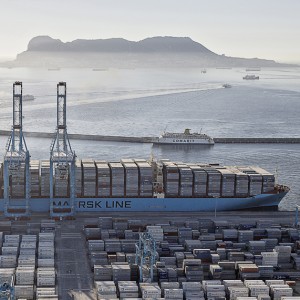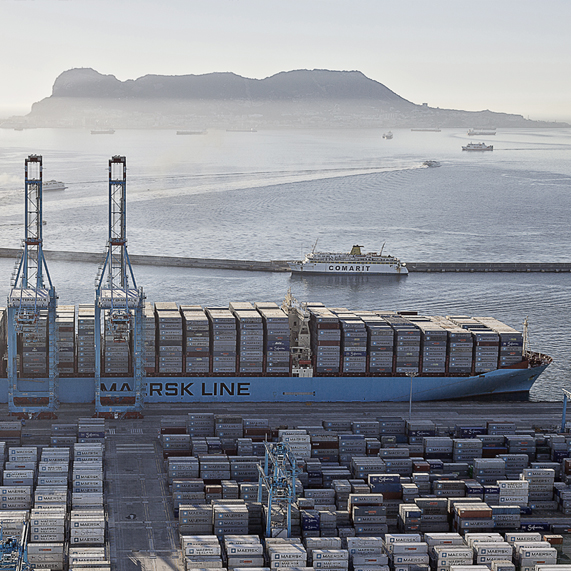 Danish box shipping giant Maersk Line said its profits in 2015 were sliced close to half from 2014 as it described its struggles last year amid “deteriorating market conditions with declining rates and close to zero volume growth.”
Danish box shipping giant Maersk Line said its profits in 2015 were sliced close to half from 2014 as it described its struggles last year amid “deteriorating market conditions with declining rates and close to zero volume growth.”
The world’s largest container shipping company said it made US$1.3 billion in profit in 2015, which is 44% lower than its $2.3 billion income in 2014, due to weak demand and very low freight rates. Revenue was $23.7 billion, which is 13.2% lower than 2014’s intake of $27.4 billion.
Maersk Line added that its average rate decreased by 16% compared to 2014. In the fourth quarter, the decrease was 25% compared to the same quarter in 2014.
“Rates declined due to weak demand, over-capacity and intense price competition. Rates declined across all trades except North America. In the Asia-Europe trade, rates reached an all-time low,” it said.
Global container shipping demand growth was 0% to 1% against the global container fleet’s capacity growth of 8%. The low demand growth was due to weaker imports into Europe and the slowdown in emerging market economies. The Europe, West Africa, and South American East Coast markets had negative growth.
“2015 was a challenging year. We delivered a record first quarter result and a strong first half year result. However, the continued lack of demand and over-capacity resulted in sharply declining rates from the second quarter and onwards,” said Soren Skou, CEO of Maersk Line.
At the end of 2015, Skou said, the liner’s rates were a record low and fourth quarter results were negative. “In light of our expectations at the beginning of the year, our result is less than satisfactory. But considering the market in 2015 it is a solid financial performance.”
The company said it still achieved a number of milestones in 2015.
“We maintained our market share. We improved our competitiveness by continuing to reduce unit cost. We successfully implemented 2M, the world’s largest vessel sharing agreement. We launched a new container shipping line—SeaLand—in the Americas. We accelerated cost and transformation efforts to prepare our organization to the future. Last but not least, we ordered new vessels and containers to support our growth ambition,” said Skou.
The unit cost decreased by 11.5% to a record low of $2,288 per forty-foot equivalent unit.
The implementation of the 2M vessel sharing agreement with MSC entailed an unprecedented phase-in of 193 vessels and 2M is delivering benefits in line with the target, said the company.
Organizational restructuring
In November 2015, Maersk Line announced a plan to transform itself into a “leaner, more agile and more focused organization” driven by standardization, automation, and digitization of processes. This includes taking cost-cutting measures such as trimming the workforce by at least 4,000 positions by the end of 2017.
In August 2015, Maersk Line announced a revised growth strategy: To grow at least in line with the market to defend its market leading position. In support of this, Maersk Line ordered 27 new container vessels and 130,000 containers. The container vessels will be delivered 2017 and onwards.
For this year, Maersk Line expects the container shipping market to remain weak and rates to remain under pressure due to overcapacity. It forecasts the global container shipping demand to grow by 1% to 3%.
“We expect the container shipping market to grow a bit more in 2016, but it will still be a challenging year. Not least as over-capacity and a large order book, sufficient for many years of growth, plague the industry. We will continue to drive out costs and tightly manage our capacity in line with demand. We will return chartered tonnage and close down underutilized or unprofitable services,” said Skou.
Maersk Line expects a significantly lower underlying result for 2016 compared to 2015.
“In the last three years, we have pursued a cost leadership strategy and we have been the most profitable company in the industry, both in relative and absolute terms. In fair weather and in strong headwinds, our strategy has proven to be the right one. We have the financial, commercial, operational strength to grow and remain a market leader in container shipping,” concluded Skou.





